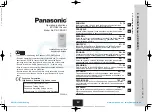
EPSON
______________________________________________________________________________________________________
PIS # T043120
Version 3.54 (USA)
Page 3 of 4
Release Date 05/2010
Oxidizing properties:
None
Vapor density:
Greater than 1 (air = 1)
Relative density:
1.07 at 68 deg. F / 20 deg. C
Solubility in water:
Complete
Solubility in fat:
No data available
Partition coefficient:
No data available
Viscosity:
Less than 5 mPa-s
10.
Stability and Reactivity
Stability:
Stable
Hazardous polymerization:
Will not occur
Hazardous decomposition products:
None
Incompatible materials:
Oxidizers and explosives
11.
Toxicology and Health Hazards
Routes Of Overexposure:
Eye, skin, inhalation, and oral
Acute Health Hazards:
•
Overexposure of eye surface to ink may be mildly irritating
•
Overexposure of skin to ink contact may cause irritation and in some people swelling and redness
•
Intentional inhalation overexposure to ink vapors may result in respiratory tract irritation
•
Intentional or accidental oral ingestion may cause an upset stomach
Chronic Health Hazards:
None
known
Carcinogenicity:
With excessive exposure, carbon black has been listed as a possible human carcinogen.
However, as engineered within this ink cartridge, emissions to air of carbon black during
normal printing use have not been found. IARC, the International Agency for Research
on Cancer, has found printing inks to be not classifiable as human carcinogens
.
Toxicity Data:
Oral LD50
Dermal LD50
Inhalant LC50
OSHA Regulated?
> 5000mg/kg(Rats)
> 2000mg/kg(Rats)
Not Applicable
Not Established
12.
Ecological Information
No data available on the adverse effects of this material on the environment
13.
Disposal Considerations
Used and unused cartridges are not a federal RCRA hazardous waste. Disposal should be in accordance with federal,
state, and local requirements.
14.
Transportation Information
Not regulated as a Hazardous Material by DOT, IMO, or IATA






















